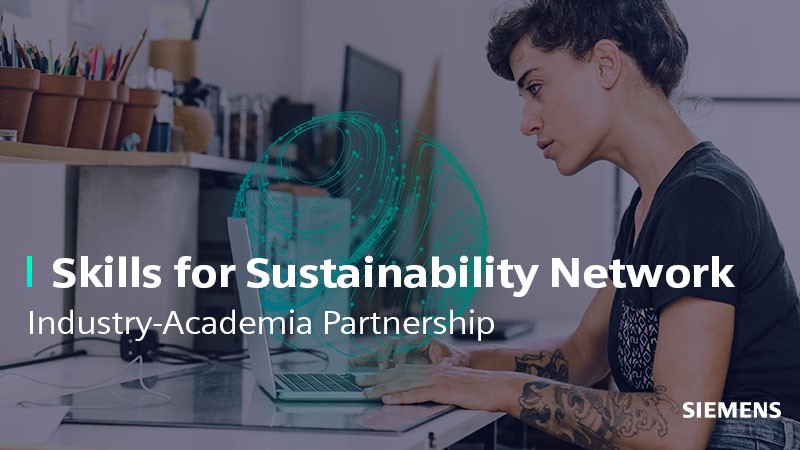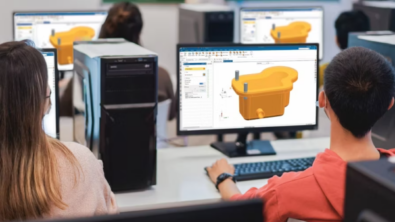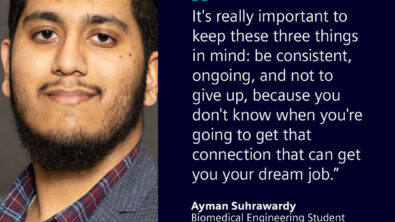Sustainability Case Studies

During recent Skills for Sustainability Network roundtables, we heard about the pressing need for more and better materials from industry for teaching about sustainability. As an immediate response, we put together four sustainability case studies based on existing Siemens materials, and developed a summary, additional student-oriented resources (reading or video) and a series of questions and assignment prompts. This is a first step – not a full ‘toolkit’ – and therefore we would very much appreciate your feedback on the materials developed in the comments below.

Case Study 1: Reducing the carbon footprint of supermarkets
Industry: Consumer products and retail
Key points: Using a digital twin of grocery store refrigerators, Williams engineering was able to use airfoils to significantly improve fridge efficiency.
Additional resources: Related design challenge: How to stay cool in the summer
Questions and assignment prompts:
- The small change of adding airfoils to the fridges reduced carbon emissions by 7% in some stores, and will save 2.5 million tons of carbon over the next 10 years. What is another example of how small improvements can save large amounts of energy?
- Can you think of additional applications of air curtains? How else might air curtains be used reduce energy consumption?
- How would you model the solution? What data would you need to evaluate the effectiveness of a prototype?
- Think of another engineering concept that you’ve learned this year that could be applied new ways. How could you use this concept to make a product or industry more sustainable?
Case Study 2: Generative engineering – Prosthetic design at Girssom High School
Industry: Medical devices
Key points: Custom prosthetics are becoming accessible to more people through tools like Solid Edge. These prosthetics improve the quality of life for their recipients. Generative design also offers other benefits: fewer materials are used and custom prosthetics can be developed more quickly.
Additional resources:
Young Engineer Takes Great Strides with Prosthetic Foot
NX helps revolutionize remote development of personalized arm prosthetics for kids
Questions and assignment prompts:
- How does prosthetic design relate to the UN Sustainable Development Goals.
- Explain what rapid prototyping is. How did rapid prototyping improve the process of creating the prosthetics and getting them to users? In general, how can rapid prototyping increase the efficiency of product design?
- What is generative design? How did generative design improve the product from a usability perspective? How did generative design improve the product from a sustainability perspective?
- Both of the prosthetic designs are examples of custom designs. What are some ways that custom designs can be more sustainable? What are some ways custom designs might be less sustainable?
Case Study 3: Redefining the future of universities – University of Birmingham
Industry: Smart communities
Key points: Many communities have ambitious sustainability goals with aggressive timelines. University of Birmingham is committed to making campuses in Edgbaston and Dubai net zero by 2035. One way they are reaching this goal is by using IoT sensors and big data to improve efficiency across the campus.
Additional resources: The Insider Podcast: Redefining the future of universities with the University of Birmingham
Questions and assignment prompts:
- What is a digital twin? What is one way that the University of Birmingham used digital twins to improve campus sustainability?
- Identify at least one application for digital twins for smart communities that was not mentioned in the article. Relate the expected benefits of this new application to one or more of the UN Sustainable Development Goals.
- The University of Birmingham uses sensors to collect large amounts of real-time data to improve efficiency. What is another way you could use real-time data to improve efficiency on your campus?
- List and explain three barriers colleges might face when trying to adopt a highly interconnected and data driven system like the one at the University of Birmingham.
Case Study 4: Moving electric vehicle manufacturing into the fast lane
Industry: Automotive
Key points: Positive impact of EVs on sustainability goals. The EV market is growing, and many design and production challenges remain. There is a need to approach these challenges with a sustainable mindset.
Additional resources: PlugtoGrid™ EV Charging Solutions
Questions and assignment prompts:
- Identify three challenges related to EV design and describe how they influence sustainability. Relate each challenge to one or more of the UN Sustainable Development Goals.
- What is additive manufacturing? How was additive manufacturing used to make vehicle production more efficient?
- Identify one trade-off of electric vehicles. How did manufacturers help address the problem? Can you think of any other possible solutions?
- EVs have many trade-offs. Identify another trade-off to an existing green solution and a possible solution.


